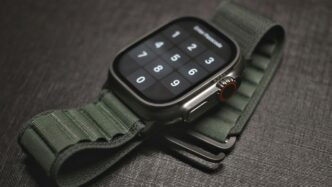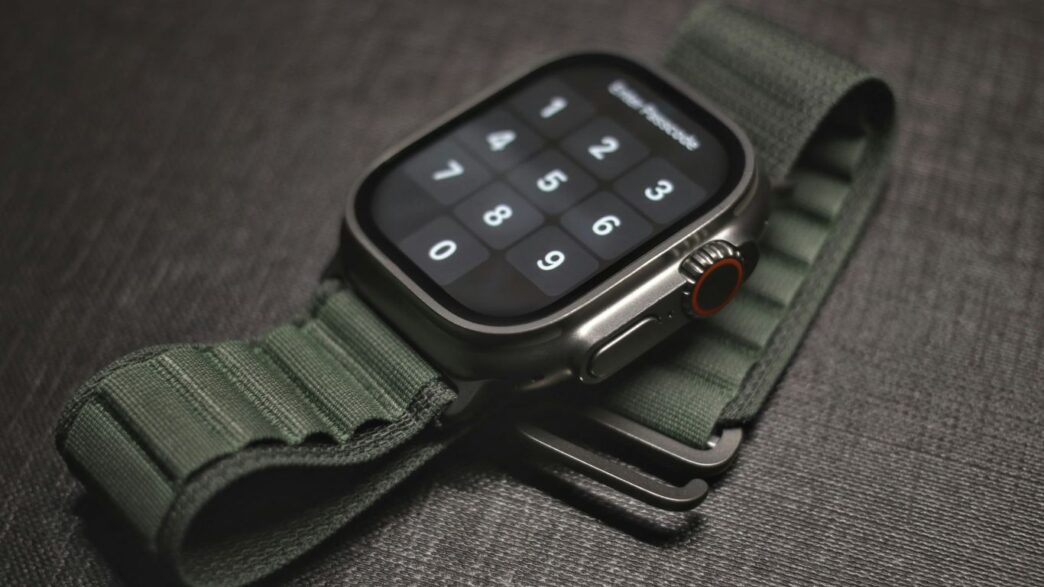There are so many smart watches for Android Samsung phones right now, it can feel a bit overwhelming. A few years ago, there weren’t many decent options, but now there are watches for every taste, budget, and need. Whether you want something that tracks your health, lasts for days on a single charge, or just looks good on your wrist, there’s a model for you. In this guide, I’ll break down the top 7 picks for 2025, what makes each one stand out, and what you should know before buying. Let’s get into it and hopefully make your next smartwatch choice a little easier.
Key Takeaways
- The Samsung Galaxy Watch 8 leads the pack with new health features and built-in Gemini AI, making it a top choice for Samsung phone users.
- Google Pixel Watch 4 is a solid option for anyone wanting smooth Wear OS 6 performance, long battery life, and a clean design.
- Samsung Galaxy Watch 7 still holds up with strong fitness tracking and a lower price, especially if you find it on sale.
- OnePlus Watch 3 is great if you care about battery life, lasting several days on a single charge, though it skips cellular features.
- Garmin Forerunner 265 and Amazfit Bip 6 are strong picks for fitness fans or those on a budget, offering good tracking and compatibility with Android Samsung phones.
1. Samsung Galaxy Watch 8
Samsung really went for something new with the Galaxy Watch 8. The design has changed to a squircle shape, which honestly looks odd at first glance, but it sits well on the wrist. After a week, I hardly noticed the difference versus the usual circle. If you care about comfort or wear your watch 24/7, it’s worth paying attention to.
What stands out on this watch is just how much health data it can track. You’ve got the usual sleep, heart rate, and oxygen tracking, plus more advanced stuff:
- Antioxidant Index, which estimates carotenoid levels in your skin—sounds fancy, and you do see interesting trends day to day, though I wouldn’t base my diet on it.
- Vascular Load metric that tries to show how hard your arteries are working during exercise or sleep.
- AI Running Coach, basing its routine on your actual test runs, not a preset.
- Sleep tracking that picks up on snoring or potential sleep apnea.
If you love numbers, here’s a quick snapshot of its main specs:
| Feature | Galaxy Watch 8 Specs |
|---|---|
| Display Size | 1.34 inches (AMOLED) |
| Max Brightness | 3000 nits |
| Battery Life | ~1.5 days |
| Operating System | One UI 8 Watch (Wear OS 6) |
| Processor | Exynos W1000 |
| Water Resistance | 5 ATM |
| Connectivity | Bluetooth, Wi-Fi, LTE |
A couple more points I noticed during use:
- The battery didn’t improve much—it needs daily charging, especially if you use the health features all the time.
- It runs Wear OS, so it works best with Android and especially Samsung phones. You get tight integration for calls, notifications, and Samsung-specific health apps.
- The Google Gemini virtual assistant is a lot more useful than past Samsung voice helpers. You can ask it about your daily metrics or help schedule things.
If you’re looking for a feature-packed, smart health companion for your Android or Samsung phone, Galaxy Watch 8 is maybe the most loaded option you’ll find in 2025. Just budget time to charge it overnight!
2. Google Pixel Watch 4
The Google Pixel Watch 4 is one to watch if you own a Samsung Android phone in 2025. It balances style and smarts, bringing both a refreshed look and big tech upgrades compared to past models. The new domed display has thinner bezels and is easier to read in bright daylight, which honestly is a small but real improvement. There are two sizes this time—41mm and 45mm—finally giving folks more choice for their wrists.
Battery life is a lot better now, easily stretching past two days on a charge. That’s a jump forward from most watches that still need nightly charging. And Google tweaked the charging, so it’s noticeably faster if you forget to top up overnight.
What stands out most:
- The Gemini AI Assistant, ready to respond to your voice or just a wrist raise, feels more responsive and helpful than past voice tools.
- Google kept Fitbit’s health tracking, so you get things like Readiness Score, Cardio Load, and Training Load—helpful if you’re keeping tabs on your fitness but not sure where to start.
- Satellite SOS on LTE models. If you’re out hiking or traveling and something goes wrong—even with no cell signal—you can reach emergency services.
- Replaceable battery and screen, which means this isn’t some disposable gadget when things break.
Here’s how the important specs break down:
| Feature | Pixel Watch 4 (41mm/45mm) |
|---|---|
| OS | Wear OS w/ Gemini Assistant |
| Battery Life | 60+ hours (45mm) |
| Display | OLED, domed, up to 3,000 nits |
| Water Resistance | 5ATM |
| GPS | Dual-frequency |
| Health Features | ECG, heart rate, pulse alert |
| SOS Feature | Satellite (LTE models) |
| Price | $349 (base model) |
Some things to think about: This one’s Android-only—no iPhone support. The Satellite SOS only works on LTE models, and repair options are still sort of limited outside the US and Canada, but having a replaceable battery is a real step up. Overall, if you’re leaning into Google’s ecosystem, this watch fits right in. It’s not the absolute cheapest out there, but for what it can do, many will see that as a fair trade.
3. Samsung Galaxy Watch 7

The Samsung Galaxy Watch 7 still holds its own in 2025, especially if you spot it on sale. It’s a sturdy Android smartwatch that hits a sweet spot between price and reliable features. What really stuck with me after a week of testing is how straightforward it is—the round design feels lighter than the Galaxy Watch 8’s newer body, and setup couldn’t be easier on Samsung and most Android phones.
Here’s what made the Galaxy Watch 7 stand out:
- Super detailed sleep tracking, including insights after just a night’s use
- Energy Score every morning, which is oddly motivating for planning your day
- Heart rate alerts and irregular heartbeat monitoring
Battery life averages about 24 hours, but switching on power saver stretches it closer to 40. I got comfortable wearing it at night because of how light it feels. There’s no bulk or clunky bezels here; it’s just a smooth, circular watch in two sizes (40mm and 44mm).
If you’re concerned about app options or fitness tracking, don’t be. You get tons of workout options, sleep apnea detection, plus Samsung Pay. Of course, now that the Galaxy Watch 8 is the standard pick for most people, Watch 7 prices are much better—you might get one for well under $300 if you watch sales.
Here’s a straight-up comparison of the Galaxy Watch 7’s main specs:
| Feature | Details |
|---|---|
| Sizes | 40mm, 44mm |
| Battery Life | ~24 hrs (40 hrs saver mode) |
| OS | Wear OS (Samsung UI) |
| Payments | Samsung Pay |
| Special Features | Sleep insights, Energy Score, health alerts |
So, if you aren’t set on Gemini AI or the very latest health sensors, the Galaxy Watch 7 is still a smart, practical buy in 2025.
4. Samsung Galaxy Watch Ultra
The Samsung Galaxy Watch Ultra pushes durability and endurance to a new level for Android smartwatches. Designed for people who spend a lot of time outside, it’s a top pick for hikers, trail runners, and mountain bikers who need their watch to survive a few bumps and scrapes. Its battery can last up to 48 hours, even with features like always-on display and GPS running. The titanium case is solid yet surprisingly light, and the screen is super-bright—up to 3,000 nits—so it’s always readable, day or night.
It only comes in a 47mm size, so it looks and feels big on your wrist, but that makes room for more tech inside:
- 10ATM water resistance (can handle 100 meters underwater, but Samsung says no high-pressure diving).
- Dual-frequency GPS and offline maps for reliable tracking off the grid.
- Track Back feature to guide you home if you get lost.
- Customizable Action Button for quick access—a flashlight, workout mode, emergency siren, or whatever you need.
- All the usual health features: sleep apnea detection (works best with Galaxy phones), AI wellness tips, body composition analysis, and heart health alerts.
- Built-in LTE for calls and messages without your phone.
If you’re moving from another watch, it’s cool to see how the Ultra stacks up. Here’s a quick side-by-side:
| Model | Starting Price | Case Size | Battery Life | Water Resistance |
|---|---|---|---|---|
| Google Pixel Watch 4 | $349 | 41mm, 45mm | ~24h | 5ATM |
| Samsung Galaxy Watch 8 | $349 | 40-46mm | ~24h | 5ATM |
| Samsung Galaxy Watch 7 | $299 | 40, 44mm | ~24h | 5ATM |
| OnePlus Watch 3 | $329 | 47mm | ~24h | 5ATM |
| Garmin Forerunner 265 | $449 | 42/46mm | ~48h | 5ATM |
| Samsung Galaxy Watch Ultra | $649 | 47mm | ~48h | 10ATM |
| Amazfit Bip 6 | $129 | 44mm | ~14d | 5ATM |
The Ultra isn’t cheap, but I get why some people go for it—it just runs longer, tracks better, and feels built for real-world abuse. Samsung phones get the most features, since some health stuff needs their app. The battery saving modes and power efficiency are also better than most other Android watches. It’s one of Samsung’s best options if you’re all about adventure—or just want your watch to survive more than a day off the charger.
5. OnePlus Watch 3

If you’re tired of charging your smartwatch every night, the OnePlus Watch 3 might just make you reconsider what you expect from Wear OS watches. Outshining most Android contenders, the OnePlus Watch 3 delivers a battery life that stretches past four days even with the always-on display on—something you don’t see often in flagship models. The Watch 3 is built from tough stainless steel and sapphire crystal, and its 47mm size means it looks serious on the wrist (though, fair warning, it may be too chunky for smaller wrists as there’s currently no smaller version).
Let’s talk features. This watch runs Wear OS 5 and offers a solid set of smarts you’d want in 2025: notifications, calls, Google Wallet for tap-and-go payments, and a snappy new Snapdragon chip for smoother app performance. Fitness fans will get loads out of it: reliable GPS (dual-frequency, so better signal in tricky spots), heart rate and blood oxygen monitoring, and even wrist temperature tracking. It pulls in all kinds of health insights, offering those stats in an easy way that has caught the attention of reviewers who prize detailed, actionable info.
Here’s a straightforward look at how the OnePlus Watch 3 compares:
| Feature | OnePlus Watch 3 |
|---|---|
| Display | 1.5" AMOLED |
| Battery Life | 4–5 days |
| GPS | Dual-frequency |
| Water Resistance | Yes (Swim-proof) |
| Payment Support | Google Wallet |
| LTE | No |
| Case Size | 47mm |
| Health Sensors | Heart rate, SpO2, Temperature, Fall detection |
Highlights for the everyday Android user:
- Very long battery life compared to other smartwatches
- Wear OS 5 with smooth app experience and Google features
- Detailed fitness and wellness insights, including AI-driven health suggestions
- Durable materials and a big, bold screen
A couple things to keep in mind: you do miss out on cellular (LTE) support, so you’ll need your phone nearby for calls and data. And while the big screen is sharp and bright, those with smaller wrists might find it a bit overwhelming. If you’re hunting for high battery life and solid health tracking—without breaking the bank—the OnePlus Watch 3 slots itself neatly as a strong option beyond Samsung or Google for shoppers interested in watches with exceptional battery and display.
Bottom line: The OnePlus Watch 3 isn’t perfect, but for anyone wanting fewer trips to the charger and robust health features, it’s easily one of the top contenders for Android in 2025.
6. Garmin Forerunner 265
Out of all the watches that play nice with Android, the Garmin Forerunner 265 is the one that runners keep coming back to. It’s got a reputation for nailing fitness tracking, especially if pounding the pavement is your thing. The watch comes in two different sizes, so whether you’ve got a small wrist or a bigger one, you’re covered. The AMOLED display is super easy to read, even when you’re running in harsh sunlight, sweat and all.
Accurate GPS and a comfortable, lightweight design make it stand out for daily and marathon use. Battery life is solid – you’ll get up to 24 hours even if you leave GPS turned on the whole time. Music controls are built in, so you can leave your phone at home, and there’s enough room to store playlists right on the watch.
Here’s a quick comparison table:
| Feature | Garmin Forerunner 265 |
|---|---|
| Sizes | 42mm, 46mm |
| Battery Life (GPS) | Up to 24 hours |
| Water Resistance | Yes (Swim-Proof) |
| Mobile Payments | Yes |
| LTE | No |
| Display | AMOLED |
Some highlights worth knowing:
- Training Readiness Score and Morning Report give daily health insights, so you know when to push harder or dial it back.
- Triathlon mode lets you track complex, multi-sport activities with just one device.
- You can switch between physical buttons and the touchscreen – the buttons are a lifesaver when you’re sweaty or wearing gloves.
It’s not the cheapest watch out there for Android, and it’s not crammed with all the bells and whistles you’d get from Wear OS models. But for seriously accurate sport tracking with a good selection of smart features, the Forerunner 265 is still a top pick for athletes who use Samsung phones.
7. Amazfit Bip 6
Amazfit Bip 6 stands out for being a real bargain, especially if you’re keeping an eye on your budget. At a price well under $100, it manages to pack in features you’d expect from more expensive models, so it’s a surprise how much you get for so little. While it doesn’t feel as fancy as Samsung’s or Google’s flagship watches, the Bip 6 makes up for that in practical ways.
Here’s why the Amazfit Bip 6 is worth a look for Samsung phone users:
- Battery life is a big win here—you can go about a week (sometimes even more) between charges, which easily beats out many pricier alternatives.
- You get a full set of fitness and health tracking: continuous heart rate, blood oxygen level (SpO2), temperature monitoring, sleep patterns, plus handy alerts if your heart rate jumps or dips too much.
- The large rectangular screen (almost 1.5 inches) is easy to read even on the move.
- It plays nicely with both Android and iOS, so if you switch devices down the line, you’re still covered.
Here’s a quick table with the essentials:
| Feature | Bip 6 Value |
|---|---|
| Display Size | 1.47 inches |
| Battery Life | Up to 7+ days |
| Water Resistance | 5ATM |
| Heart Rate Alerts | Yes |
| SpO2 Monitoring | Yes |
| Temperature Sensor | Yes |
| Compatibility | Android, iOS |
| GPS | Yes (single band) |
Is it perfect? No. The design is basic, so if you want something that screams style like the Samsung Galaxy S7 and S7 Edge, you might be disappointed. Still, for anyone curious about smartwatches or looking for a backup, this one covers most needs without emptying your wallet.
With the Amazfit Bip 6, you’re trading off a polished look and app variety for great battery life and solid tracking, which is a deal a lot of people are more than happy to make.
Conclusion
Picking the right smartwatch for your Samsung Android phone in 2025 isn’t as simple as it used to be. There are more choices than ever, and each one brings something a little different to the table. Some watches are packed with health and fitness tools, while others focus on battery life or style. Compatibility is still a bit of a headache—certain features might only work if you stick with the same brand as your phone, which is a bummer. But the good news is, whether you want the latest Galaxy Watch, a Pixel Watch, or something from Garmin or OnePlus, there’s a solid option out there for you. Just remember to think about what matters most: battery life, fitness tracking, price, or maybe just how it looks on your wrist. And if you’re not in a rush, waiting for the next software update or a holiday sale might save you some cash. Either way, there’s never been a better time to find a smartwatch that fits your life.
Frequently Asked Questions
Which smartwatch works best with Samsung phones?
The Samsung Galaxy Watch 8 is the top pick for Samsung phone users. It is made by Samsung, so it connects easily and offers the most features when paired with a Samsung device.
Can I use a Samsung smartwatch with a Google Pixel or other Android phone?
Yes, you can use Samsung smartwatches with other Android phones, like the Google Pixel. However, some special features, like advanced health tracking, might only work fully with Samsung phones.
How long does the battery last on these smartwatches?
Battery life varies by model. The OnePlus Watch 3 can last over four days on a single charge, while watches like the Galaxy Watch 8 and Pixel Watch 4 usually last about one to two days, depending on how you use them.
Do all these smartwatches run the same operating system?
Most of these watches run on Wear OS, but some use their own software. For example, Garmin and Amazfit use different systems. Always check if the watch is compatible with your phone before buying.
Are these smartwatches good for fitness tracking?
Yes, all the watches listed track basic fitness stats like steps, heart rate, and sleep. Some, like the Garmin Forerunner 265, are designed for runners and athletes and offer advanced workout features.
Is it worth buying last year’s model to save money?
Yes, buying an older model can be a smart way to save money, especially since many older watches still get software updates. Just avoid very old models, as they may not get new features or updates.














